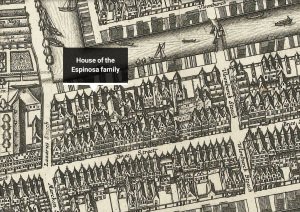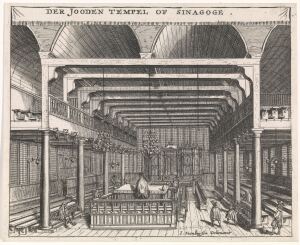Presumably, Spinoza was born in a house somewhere in or around the Vlooienburg quarter, but archival records are missing.
Vlooienburg (also ‘Vloonburch’ or ‘Vloënburch’, origin of the toponym uncertain, translation: embankment) was the name of a rectangular artificial island—in front of the islands Rapenburg, Marken and Uilenburg—in the bed of the river Amstel. The embankment was originally heightened for the storage of wood at the ve... Read more








.-largethumb.jpg)


-largethumb.jpg)









